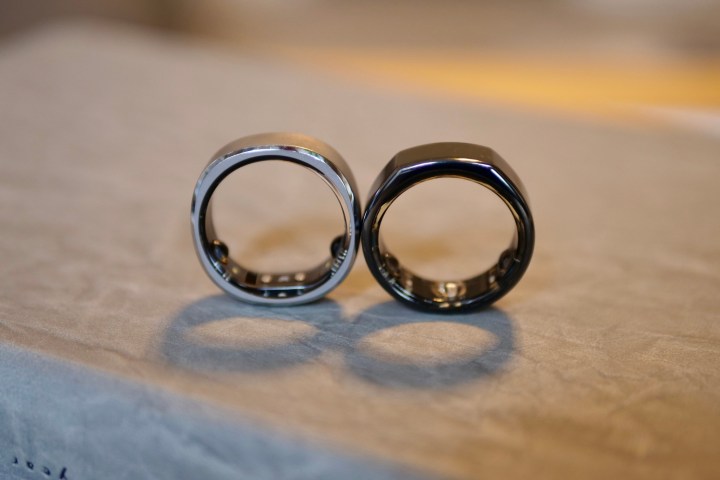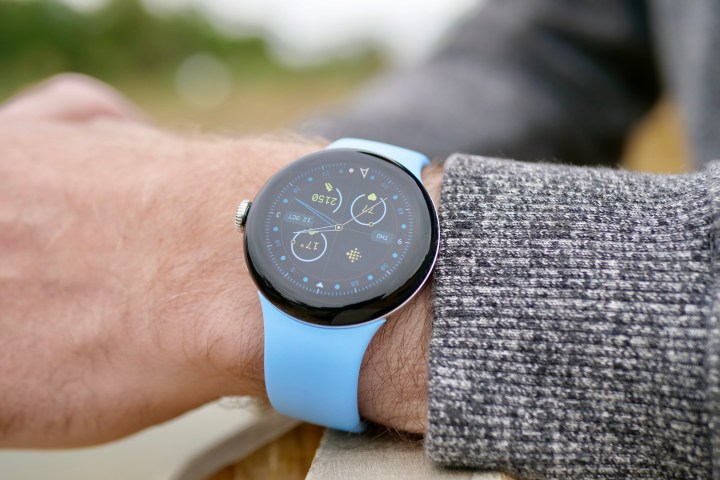
Samsung had the opportunity to change its strategy with the Galaxy Ring and introduce a subscription model for its app, something it has discussed doing in the past. For now, though, it has chosen to keep access and data free, just like it is with the Galaxy Watch range.
This is a far bigger deal than you may initially think, and it has the potential to change the way health and fitness brands view subscription models in the future.
Subscription fever

The Samsung Galaxy Ring uses the Samsung Health app to communicate with your phone, and the company has made it very clear that it will be free to use and that no subscription will be required to unlock features or data. This is different from Oura’s strategy with the Oura Ring, where it charges $6 per month to access the data. If you don’t pay, functionality is reduced to viewing three basic numbers: your Sleep Score, Readiness, and Activity.
While it’s not the only smart ring alternative to the Galaxy Ring, the Oura Ring is by far the best alternative. While the RingConn Smart Ring is a decent runner-up, the app doesn’t provide the same level of data insight or complexity as the Oura Ring, but it is entirely free to use after you’ve paid for the ring itself. Circular, makers of the Ring Slim, isn’t forthcoming about whether a subscription fee will be introduced for its app and features or not, and such indecision, along with the shortcomings of the product, make it a poor choice.
What if you choose a smartwatch instead? Like Samsung, Apple does not charge a subscription to its health and fitness apps for the Apple Watch, but Google encourages you to pay $10 per month for Fitbit Premium’s in-depth data and a few additional features. This applies to the Google Pixel Watch 2, the Fitbit Charge 6, and most other Fitbit wearables. At almost every turn outside of Apple and Samsung, the potential to pay monthly to see your health and fitness data is usually there.
Samsung had no choice

Samsung isn’t being charitable, as it was faced with little choice but to make the Galaxy Ring free to use after purchase. It can’t risk being forgotten if (when?) Apple releases a smart ring, as Apple has never hinted at a subscription model for its health platform. Plus, it must compete with the Oura Ring — the most successful and currently best-known smart ring — immediately. Charging for data access would be a significant barrier against wider adoption of its first smart ring.
What’s more, it has made the wise decision to introduce a range of new features instead of either leaving the app untouched or, worse, stripping back functionality. The Galaxy Ring has an Energy Score rating that takes your activity, sleep, and heart rate data and packages it into a single figure to show daily condition. Galaxy AI powers the other new feature, called Wellness Tips, which can be tailored to help you manage weight, increase your fitness, or sleep better.
Conversely, you need Fitbit Premium to unlock a daily readiness score, and you need to pay Oura’s subscription to get details about its Readiness Score, otherwise all you see is the figure itself. Fitbit’s Wellness Report, where you get insights into how your condition is affecting your body, is also a Premium feature.
The Galaxy Ring is expensive to purchase at $399, but you aren’t missing out on features, and you don’t have to budget for ownership over time either. It’s immediately obvious that it’s a good value, and that realization quickly offsets the higher initial price.
The competition should be worried

Alarm bells should now be ringing through Oura’s and Fitbit’s offices. I’ve tried the Samsung Galaxy Ring on and the hardware is excellent, plus the overall presentation is more attractive and desirable than that of the Oura Ring. It’s also vastly more convenient to wear a smart ring than it is to wear a smartwatch or a fitness band, especially if you’re not a hardcore sports fanatic. Now add in a completely free app experience, which includes features that cost extra to access on other devices, plus a globally recognized and admired brand name, and the Samsung Galaxy Ring should have other brands quaking in their boots.
Oura has been better at adding features to its app over the past year, but the fact remains that it costs money to use the ring over time. There’s a cheaper option for the hardware, which can negate some of the extra cost compared to the Galaxy Ring for the first year, but the Samsung smart ring looks and feels more modern, plus it’s lighter, too. A Fitbit product will track more workouts, and you don’t have to pay for Premium, but none of the devices are anywhere near as stylish as the Galaxy Ring. If all you do is walk, cycle, or run at a casual level, a Fitbit may be overkill anyway.
What’s more, if your lifestyle or fitness goals change or the Galaxy Ring doesn’t exactly fit with your evolving needs, the Galaxy Watch range does everything else you could want from a fitness-tracking, app, and notification standpoint. Plus, if you choose the latest Galaxy Watch 7, it’ll work nicely with the Galaxy Ring and extend its battery life. Finally, and perhaps most importantly, does anyone really want to add another subscription to what is likely an already-too-long list if presented with a choice?
Subscriptions could change — or even disappear

No, of course no one wants to pay for a subscription. Until now, the Oura Ring was really the only sensible smart ring purchase, and paying monthly for it was the only option if you wanted to own one. While I’m not going to relegate the Oura Ring to second best until I’ve tried the Galaxy Ring for a few weeks, Oura really needs to examine an alternative to its subscription-only model.
Whether it ups the cost of the hardware or goes down the Fitbit Premium route of providing most features for free, it doesn’t matter. It has to counter the attack from Samsung at a price level if it wants to protect its future, and the same goes for Circular and its terrible messaging around subscription costs in the future. Fitbit is unlikely to change and doesn’t have a smart ring of its own yet, which brings us to how Samsung may affect this still-new product type in the future.
The Galaxy Ring may very well bring more smart rings from other brands to market as the general public starts to see the benefits of such a device, and its commitment to a free app and health data should make the companies responsible for them seriously consider doing the same. Samsung has done the right thing with the Galaxy Ring and Samsung Health.
It’s good news for us today and potentially in the future, too, but it’s bad news for those capitalizing on subscription models today unless they change their ways.



